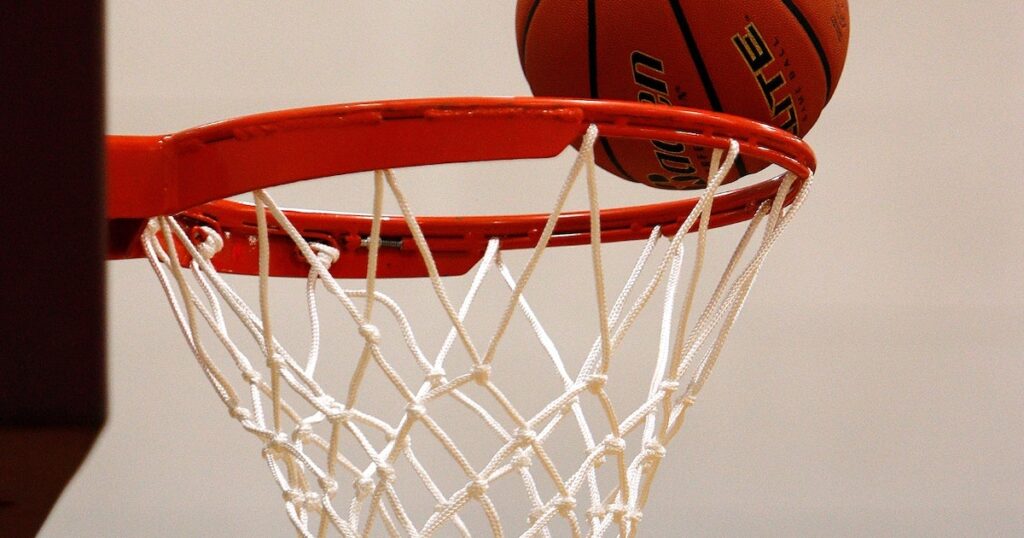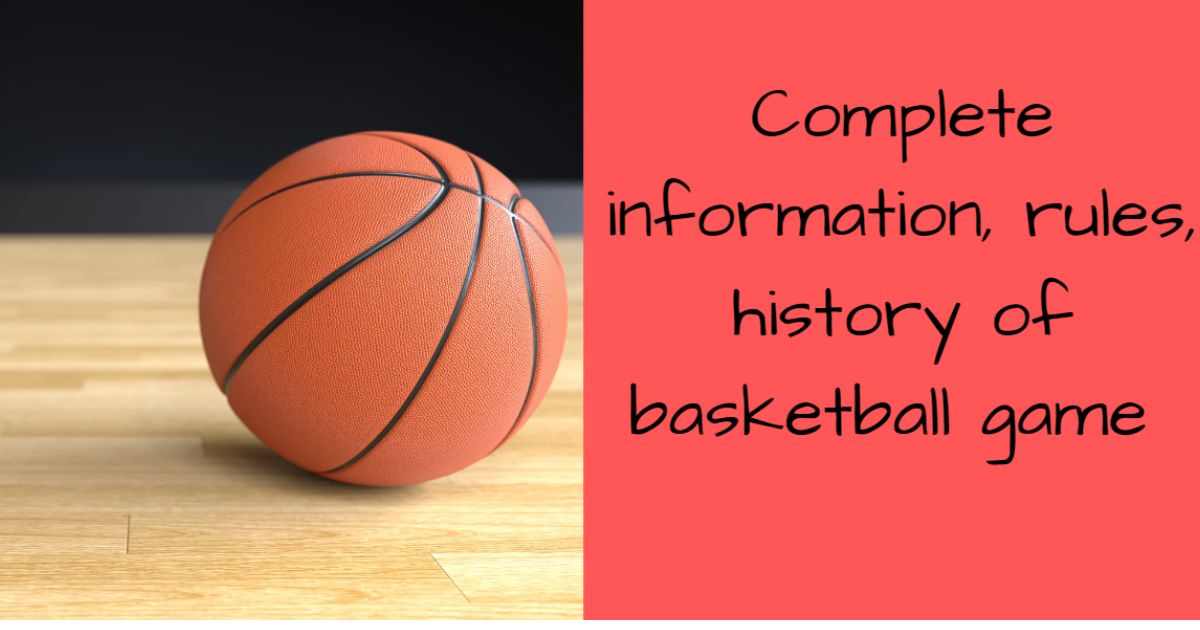Basketball
Basketball, the fast-paced and exciting game we know and love today, has come a long way since its humble beginnings. Invented in 1891 by James Naismith in Massachusetts, it started as a simple indoor activity for young athletes. But who knew that this innovative game would soon attract players and fans around the world, transforming into a beloved sport celebrated across continents?
This article falls into the fascinating journey of basketball, exploring its evolution from its early days as a creative solution for keeping athletes active indoors, to its current status as a global phenomenon that brings people together through competition, passion, and shared love for the game. We’ll explore the key milestones, influential figures, and remarkable moments that shaped the sport we cherish today.

Basketball Inventor: James Naismith
Basketball, the sport we know today, all started with one man: James Naismith. In 1891, while working at the YMCA in Springfield, Massachusetts, he invented a new indoor game to keep athletes active during winter. He printed 13 simple rules and used peach baskets to score!
The game quickly spread thanks to the YMCA network. Soon, colleges and even professional leagues were formed. Although Naismith didn’t have much to do with the sport’s later development, his creation sparked a global phenomenon that continues to bring people together today.
Basketball objective
Basketball, a fast-paced and exciting sport, boasts a remarkable journey from its humble beginnings. Invented in 1891 by James Naismith at the YMCA in Springfield, Massachusetts, it was initially designed as an indoor activity for athletes. Naismith’s innovative approach, using peach baskets and a soccer ball, transformed into a beloved sport celebrated across continents.
This rewrite dives deeper into the fascinating story of basketball, exploring its:
- Humble Beginnings: We review the easy use of peach baskets and the challenges faced in the early days.
- Transformation into a Phenomenon: Witness how basketball transcended its initial purpose, charm audiences worldwide with its energy and athleticism.
- Uniting the World: Explore how the game transcends cultural barriers, uniting people through its shared passion and competitive spirit.
This revised version focuses on the essence of basketball, highlight its humble beginnings, remarkable transformation, and unite power while maintaining a clear and short narrative.
Check out our related article
Top-10-best-basketball-player-of-all-time
10 Tallest Basketball Player Ever: Breaking Records on the Court
Michael Jordan: The Unstoppable Rise of Air Jordan
How many basketball players are on a team
Players: Each team has 12 players total, but only 5 play at a time on the court. Players can be switched in and out throughout the game.
Coaching Staff: Each team has a head coach and an assistant coach to guide the players and make game plans.
Other Helpers: Besides players and coaches, teams have a small group of non-playing staff (less than 5) who help in different ways. This might include a manager, doctor, therapist, statistician, or translator.
The popularity of basketball
Basketball started in the USA and became super popular there and in nearby countries. The NBA helped spread the love for the game even further, creating fans all over the world.
In Asia, China is a powerhouse, winning many championships. The Philippines even considers basketball its national sport! They face tough competition from Iran, South Korea, and Japan in Asian tournaments.
The sport has seen amazing moments like Russia beating the USA in the 1972 Olympics. Champions come from all over, including Greece, Serbia, Spain, France, Canada, the USA, Brazil, Italy, and Argentina!
Dimensions of basketball court
Basketball courts come in different sizes, but the official ones used in most professional and international games follow specific rules set by FIBA.
A big rectangle, indoors, measuring 50 feet wide and 94 feet long. That’s your standard court! It’s divided in half for each team, and has lines marking different zones:
- Center circle: Where the game starts.
- Free-throw lines: Areas where players shoot free throws without being guarded closely.
- Restricted areas: Zones near the basket where players can’t camp out for too long.
- Three-point lines: Arcs beyond which shots are worth three points instead of two.
Some courts, especially in schools, might be smaller, but the basic layout stays the same.
Basketball hoop and backboard basketball:
A hoop or basket with a net, having an 18-inch diameter, is securely hung horizontally.
Backboards measure 3.5ft in height and 6ft in width, with the hoop attached.
The rim of the hoop is positioned 10 feet above the ground.
In international competitions, the backboard is often transparent for better visibility.
Basketball equipment
Ball:
The basketball used in the game is an orange-colored, spherical ball with a rough texture and black outline.
It is typically made of leather or composite tough materials.
The ball is designed to be durable and easy to grip, as it is continuously dribbled, passed between players, and shot toward the basket.
Game Clock:
Some international courts feature a game clock that throw a beep at the end of each period.
Shot Clock:
Certain courts display a shot clock countdown to keep track of the time a team has to shoot the ball.
Backboard Lights:
In some cases, backboards may have bordering lights that illuminate to indicate the end of a period.
Watch the video
The basketball rules
1)Teams:
- In a standard basketball game, 2 teams of a maximum of 12 players are allowed.
- A maximum of 5 players from each team are allowed on the court.
- Substitutions can be made as desired.
2)Duration:
- The game consists of four periods of 10 minutes each.
- In case of a tie, teams play a 5-minute overtime until one team surpasses the other in points.
3)Scoring:
- A basket scored from inside the three-point arc is worth 2 points.
- A basket scored from beyond the three-point arc is worth 3 points.
- A basket scored from the free-throw line is worth 1 point.
4)Moving the Ball:
- The ball can be passed between players or dribbled by a player while walking or running.
- A player can take two steps without dribbling before passing or shooting.
- Once a player stops dribbling, they cannot resume dribbling again.
- If a team advances the ball past the half-court line, they cannot retreat over it with the ball.
5)Shot Clock:
- A team has 24 seconds to attempt a shot after gaining ball possession.
- Offensive players cannot remain within the restricted area for more than 3 consecutive seconds.
6)Fouls:
- A personal foul occurs with illegal physical contact between opponents.
- A player with more than 5 personal fouls is excluded from the game.
- Fouls on a player attempting a shot result in free throws (2 from inside the arc,)
Basketball Terms
Shots:
- Airball: A missed shot that misses everything!
- Alley-oop: A cool pass that someone catches in the air and dunks or scores before landing.
- Assist A pass that leads to a basket.
- Bank shot: A shot that bounces off the backboard and goes in.
- Blocked shot: When a defender stops a shot from going in.
- Dunk: Slamming the ball through the hoop with one or two hands.
Fouls and Violations:
- Blocking: Stopping an offensive player illegally with your body.
- Carrying: Moving your hand under the ball while dribbling.
- Charging: Bumping into a defender who is already set.
- Double dribble: Stopping dribbling, then starting again.
- Traveling: Taking too many steps without dribbling.
- Turnover: Losing the ball to the other team (e.g., through a steal or travel).
Other terms:
- Dribble: Bouncing the ball on the ground while moving.
- Drive: Moving towards the basket with or without the ball.
- Fake: Pretending to do something to trick the defender.
- Fast break: Running down the court quickly to score after a steal or rebound.
- Jump ball: When the referee throws the ball up for both teams to jump for after a tie-up.
- Jump shot: Shooting the ball while jumping in the air.
- Press: Defending closely to force the other team into mistakes.
- Rebound: Grabbing the ball after a missed shot.
- Screen: Using your body to block a defender from guarding someone else.
- Timeout: A short break in the game to discuss strategy.
Conclusion
Basketball, the fast-paced and exciting sport we know today, has come a long way since its invention in 1891 by James Naismith. It all started at the YMCA as a simple indoor activity for athletes, but quickly grew in popularity, thanks to its easy-to-understand rules and exciting gameplay.
Over time, basketball spread beyond the YMCA, with milestone matches, professional leagues, and passionate fans emerging around the world. The game itself has a standard court size, specific equipment like hoops and balls, and clear rules that ensure fair play and thrilling competition.
Today, basketball continues to be a beloved sport, bringing together athletes and fans from all walks of life through its shared love of competition, teamwork, and athleticism.

Frequently asked questions about basketball
1)What are the basketball court dimensions?
Ans The standard international basketball court measures 50 feet × 94 feet. However, courts at schools or other locations may have smaller dimensions.
2)How many players are on a basketball team?
Ans There are 12 players in a team but only 5 players are present on the court at a time.
3)In which field basketball game was played?
Ans Basketball is played on a rectangular court with hoops at each end.
4)How many quarters are in the basketball game?
Ans The game is split up into 4 twelve minute quarters
5) Who was the inventor of basketball?
Ans It was invented by James Naismith, a Canadian-born educator, and minister, in December 1891.
6)What is the objective of basketball?
Ans The main objective of basketball is to score by shooting the ball into the opponent’s hoop while defending your basket
7)Where is basketball most popular?
Ans Basketball originated in the United States and has gained wide popularity globally. It is Popular in the US, China, Serbia, France, Canada, Brazil, Italy, and Argentina.



Thanks you appreciate my work